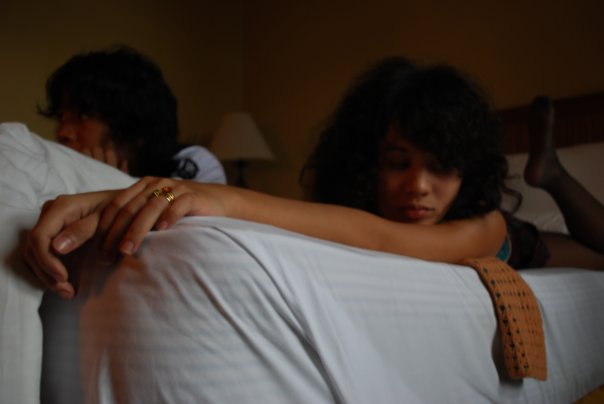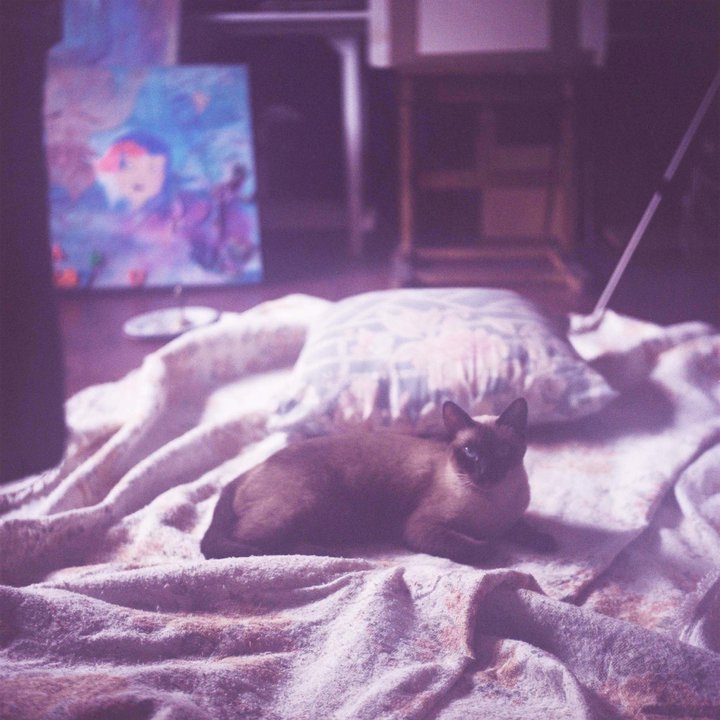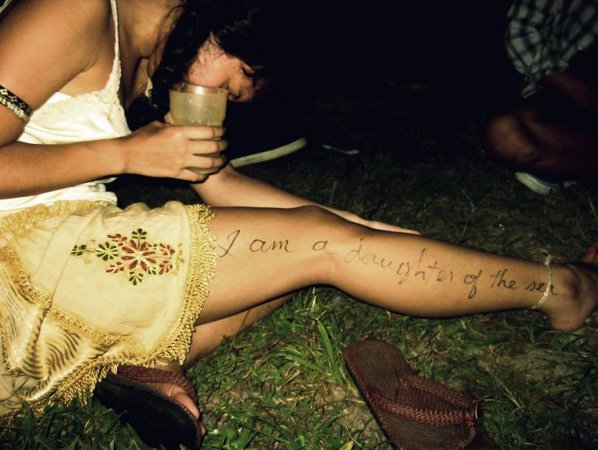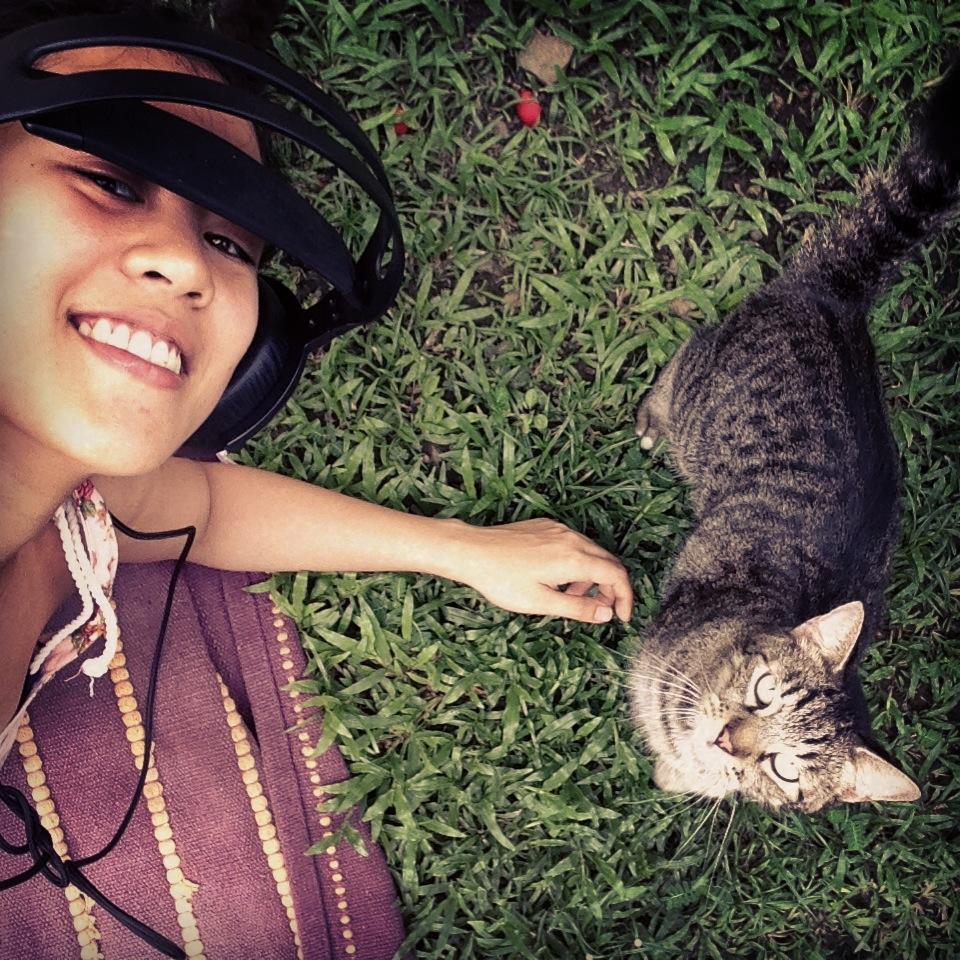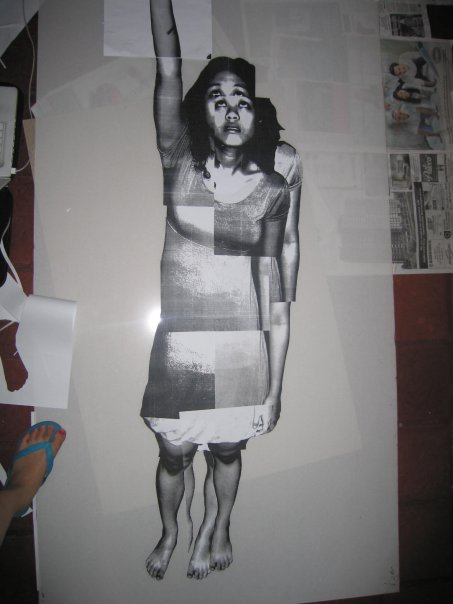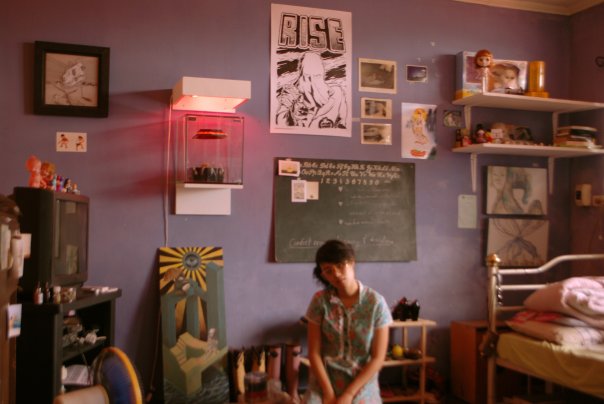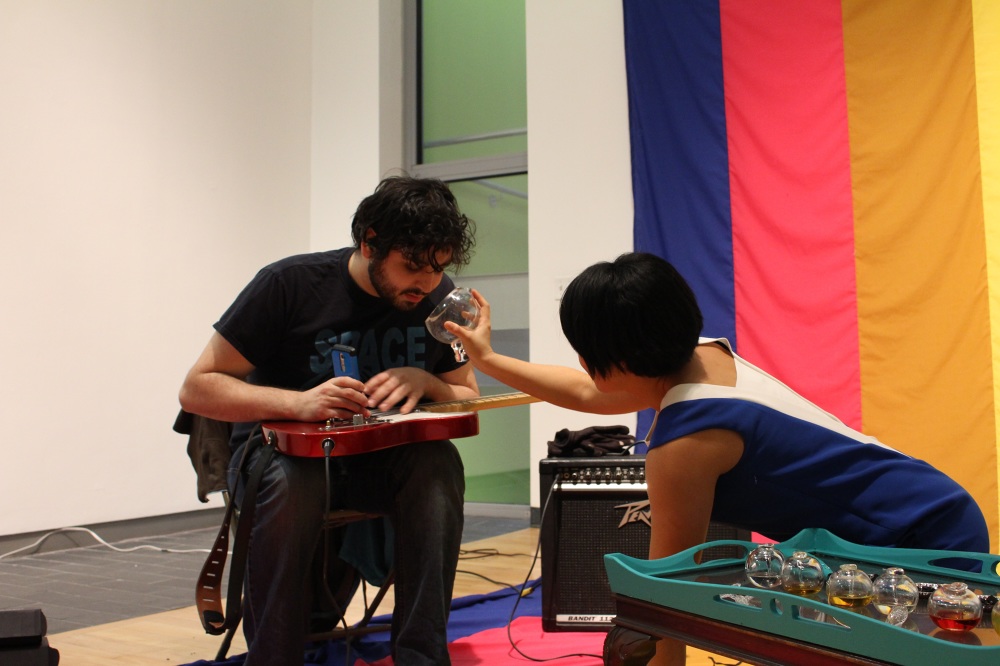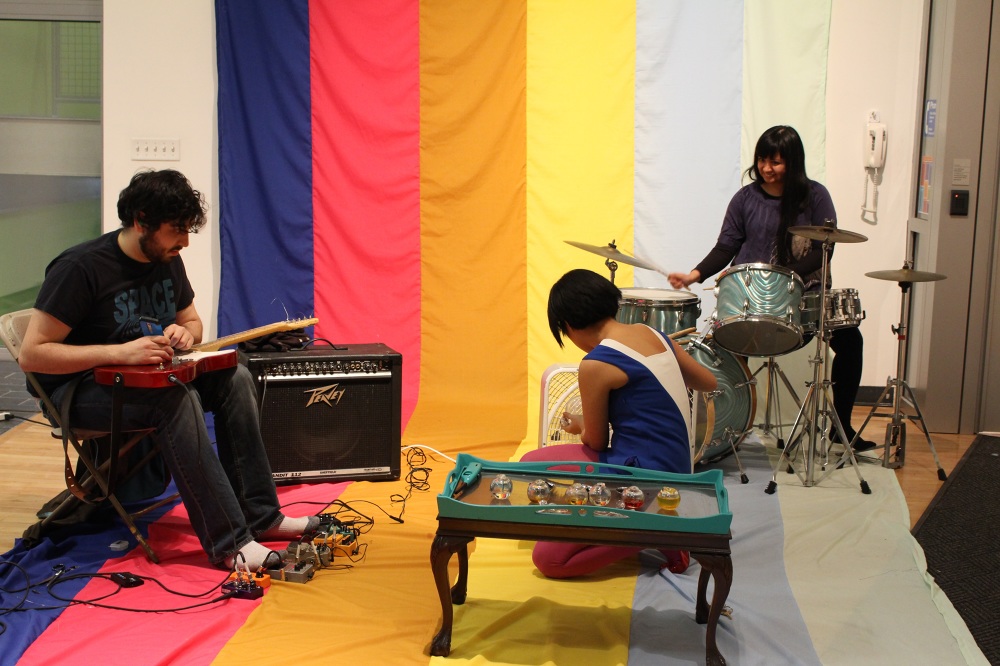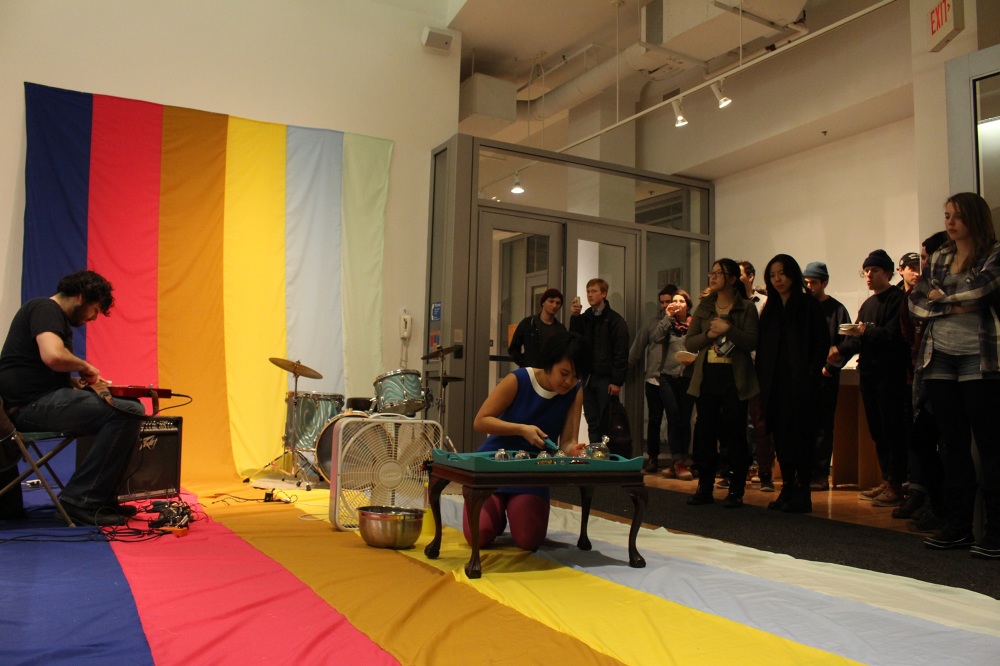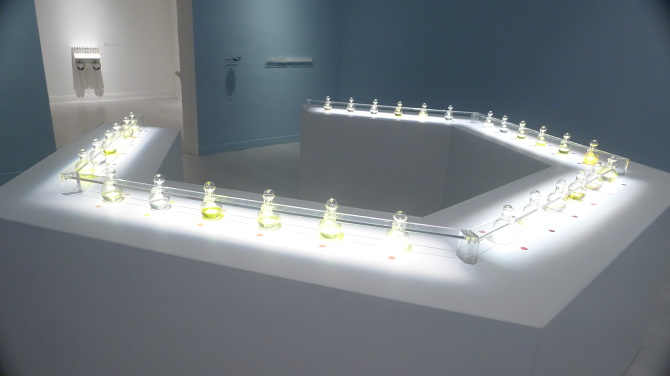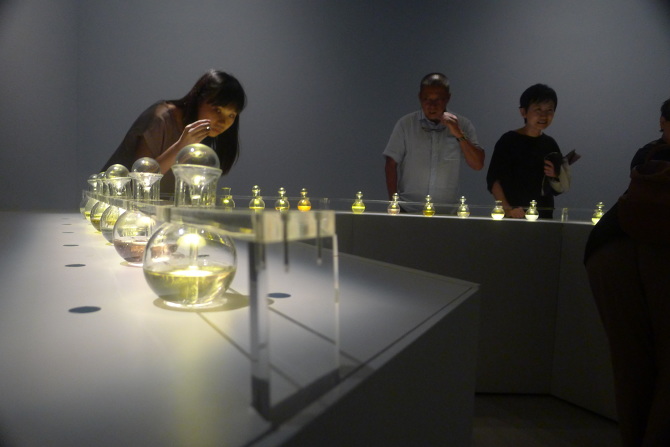Christina Poblador
Goldie Pobador :
My work is a statement. Rooted in inherited culture and personal and collective narratives of the Philippines, it is unashamed of its origins. Exploring themes of oppression, reclamation, and freedom, I use glass, scent, sound, installation, and performance to represent untold stories. My embodied autobiographical and mythological narratives take a stand for the role of eros and beauty in rewriting my identity as a Filipina woman and in
awakening the “feeling” body in our collective awareness. It is rooted in the archetype of the divine feminine—the part in all of us that thinks, feels, and dreams. It pays homage, in particular, to the lost language of the Babaylan—the archetypal Filipino goddess gifted in healing the spirit and body. My work is sensual and erotic, based on intuition and carnal knowledge. It is about learning how to celebrate despite the pains of being alive through the seemingly mundane act of sensing. It seeks to make people aware of the unimaginable pleasures and struggles that exist in places that are not the center.I grew up in the city of Manila, in a place called the Industrial Valley. My work is very much related to the environment and the degradation of the urban landscape where I grew up. In our age where an abundance of materialistic values are overwhelming, I often find myself in contemplation. In my work I want to awaken in the viewer a sense of his or her existence in relation to nature. I grew up in a place that is often punished by nature, but also because of man’s ignorance it. I am interested in creating an awareness of this, but also in doing this in a beautiful way. I am interested in the exploration of the senses. Often I am drawn to the olfactory sense of perception as a medium in contemporary art, and its link to the part of the
human brain that remembers and receives memories and emotions. Because my life has been a strong experience of both, I find myself creating both beautiful and horrible things. In terms of visual medium, I am interested in the art of glass sculpting, specifically in a technique called lamp-working. When I sculpt however, it is a very spiritual endeavor, especially when I match a scent to a form or a concept or attach it to the more personal pieces that express narratives appropriated from history, fiction and personal narrative. My practice functions around a mix of personal and cultural history, and an interest in wonder, poetry and the beautiful. It often deals with issues of Identity, sensuality and the feminine body. The body enthralls me. Its form possesses me. I am motivated by a desire to express an emancipation of the body, a sense of freedom in movement and emotion and redemption.
I explore these themes through the representation of the body as subject in sculpture, installation, performance and film. In my glass sculptures, I work from the movement of the body to shape a female nude that is moving—that is alive. In my performances I
embody the spirit of these glass sculptures, bringing the process full circle.
Christina "Goldie" Poblador is a visual artist born in Manila, Philippines.She received her MFA in Glass from Rhode Island School of Design in 2015. She has since been. Her work has been exhibited widely in Asia, and has participated several residencies and exhibitions in Europe and the United States. In 2013 she won the Alliance Française de Manille’s artist in residency prize. Her work explores the layered relationships between ecology, spirituality, cultural identity and the feminine using glass, scent, sound, and projections in the context of performance to represent untold stories and awaken the senses.
Nature punished my village
The smell of the essence of jasmine
The smell of the burning of jasmine
Held softly by a transparent vessel
The invitation to gently breathe in slowly and remember
Each inhalation draws one closer to self
And to another consciousness
The presence of body
With only one stroke can she create figure
To touch it, to hold it, would scar....
Works
Ambient Scentscapes
Ambient Scentscapes is an immersive scent and sound installation that creates a translation of music to scent using glass, and essential oils. In this project, one musical composition will be translated into scent “notes” that references the presence of top, middle and base notes which are present in the language of perfumery. Each note in the piece is color-coded and a taxonomy that is inherent to the piece is created that corresponds to the tempo and emotional resonance of the music played. The selection and pairing of sound to a scent and scent to color is based on the phenomenology of Synesthesia that is a chemical condition in the brain that crosses the perception of the senses with each other. Each perfume note is color-coded and dispersed into the air as the music is performed.
Ambient Scentscapes : Composition 2
Ambient Scentscapes is an immersive scent and sound installation that creates a translation of music to scent using glass, and essential oils. In this project, one musical composition will be translated into scent “notes” that references the presence of top, middle and base notes which are present in the language of perfumery. Each note in the piece is color-coded and a taxonomy that is inherent to the piece is created that corresponds to the tempo and emotional resonance of the music played. The selection and pairing of sound to a scent and scent to color is based on the phenomenology of Synesthesia that is a chemical condition in the brain that crosses the perception of the senses with each other. Each perfume note is color-coded and dispersed into the air as the music is performed.
May Puno sa Dibdib ng Kamatayan
Interactive installation with perfume and sound
Installation dimensions variable
Collection of the Artist
Singapore Art Museum commission
Apprehending the world through sense perception often calls upon our senses to work in multiplicity and synchronicity. On certain occasions, sense data may even cross into one another, and May Puno sa DIbdib ng Kamatayan explores the phenomenon of synesthesia, in which one sense is received or perceived via another sense. A neurological condition that affects a small percentage of people (synesthetes) and manifests in differing forms, synesthesia has also long been a source of creative experimentation and investigation by artists, writers and musicians.
May Puno sa DIbdib ng Kamatayan examines the idea of ‘composition’ as expressed – and experienced – across two senses: that of smell and sound. Despite having no immediate obvious affinity, the olfactory and audio senses employ some similar terminology and language: musical scores and perfumes are described as comprising of high, middle and low notes, where notes are also further structured in chords or accords; moreover, both song and scent are powerful triggers in conjuring feelings and memories. Amongst the senses, smell is especially potent in eliciting emotional memory because the olfactory bulb is intimately linked to the brain’s amygdala and hippocampus, which govern emotion and associative learning respectively.
Here, Goldie Poblador has selected key songs and musical arrangements that hold deep personal and emotional resonance for her, and in certain instances, also collaborated with the musicians. Through the process, she translated sonic notes into olfactory ones, creating scent compositions that synesthetically respond to their musical sources. In the adjoining room, a ‘keyboard’ or ‘palette’ of 30 perfume notes allows visitors to recreate the four scent compositions, or even improvise their own olfactory creations in accordance with their personal choice of song.
Interview
- Can you tell us your back ground?
I was born in Manila, Philippines. My country, an archipelago composed of 7,107 islands is a tropical paradise. I only truly appreciated this when I left for a long period of time in order to pursue my dream of studying the art of glassblowing. Living in the city however has made me a witness to the environmental degradation in the urban landscape where I grew up. This has become the foundation of my work in smell, memory and the senses.
- Have you always had a interest in art?
I inherited my interest in art from my parents. When I was twelve years old I was fortunate enough to see Sandro Boticelli’s The Birth of Venus. This was when I decided to become an artist. Venus played an important role in the way I perceived what it means to be a woman. She symbolized a sense of strength and shameless femininity that I would grow up trying to represent in the greater conversation of art, society and what it means for me to be a Filipina woman in the Western world. I have since devoted my life to art. I majored in Painting and Sculpture for my bachelor’s degree where I created an ironic perfume bar that depicted the nostalgic and sociopolitical landscape of the Philippines. It was my interest in creating perfume vessels that allowed me to fulfill my dreams of learning new languages, traveling an eventually getting an MFA in Glass from the Rhode Island School of Design
- Before you started your journey into scent/glass-work what were you doing?
I was a painter and sculptor, specializing in female anatomy. I was also a musician. I played the electric guitar and sang for an all girl punk band called Death by Tampon. I believe that the mundane elements that compose our lives are what separate an artful life from one that is not. What we cook, what we read, what we wear and how we treat our bodies greatly affects how we treat other people and our surroundings.
- How did visual/sound-art and scent come into your life?
My interest in visual and sound art started from a young age. I started playing the piano when I was nine and it was my background in music that lead me to incorporate it into my artistic practice. My parents loved art, and we went to museums as often as we could. My interest in scent however, was triggered by a very particular moment. In 2009 my village was hit by a very powerful typhoon. When faced with loss the greatest thing we have are our memories. After the typhoon I had a distinct yearning for the smell and tastes of a place that seemed to have disappeared in one instant. This was how I began to work with scent and its special connection to emotions and memories.
- Can you talk a little about your works?
My work is a statement. Rooted in inherited culture and personal and collective narratives of the Philippines, it is unashamed of its origins. Exploring themes of oppression, reclamation, and freedom, I use glass, scent, sound, installation, and performance to represent untold stories. My embodied autobiographical and mythological narratives take a stand for the role of eros and beauty in rewriting my identity as a Filipina woman and in awakening the “feeling” body in our collective awareness. It is rooted in the archetype of the divine feminine—the part in all of us that thinks, feels, and dreams. It pays homage, in particular, to the lost language of the Babaylan—the archetypal Filipino goddess gifted in healing the spirit and body. My work is sensual and erotic, based on intuition and carnal knowledge. It is about learning how to celebrate despite the pains of being alive through the seemingly mundane act of sensing. It also explores how the sense of smell crosses over into the other senses and my current work has been an exploration of how scent translates into the sonic, visual and choreographic.
- What is your creative process?
Showing up is the first step. Whether that means, blowing glass in the dead of winter or dancing for 3 hours in order to understand how scent affects the body. A piece always starts from something that resonates such as a Japanese haikus or a really great film. It can also be as simple as noticing the pleasures of everyday life. When I shop for groceries and cook the recipes that my grandmother taught me, for instance, this kind of thing is a big part of what inspires me in my studio. I am interested in the exploration of the senses. Often I am drawn to the olfactory sense of perception as a medium in contemporary art, and its link to the part of the human brain that remembers and receives memories and emotions. Because my life has been a strong experience of both, I find myself creating both beautiful and horrible things. In terms of visual medium, I am interested in the art of glass sculpting, specifically in a technique called lamp-working. When I sculpt however, it is a very spiritual endeavor, especially when I match a scent to a form or a concept or attach it to the more personal pieces that express narratives appropriated from history, fiction and personal narrative. My practice functions around a mix of personal and cultural history, and an interest in wonder, poetry and the beautiful. It often deals with issues of Identity, sensuality and the feminine body.
- What themes inspires you?
I have a deep interest in music and sound. Recently I’ve been into Claude Debussy and the music of Eliane Radigue. I was able to meet her last year and ask her about her process which I have been trying to translate into scent. I am also deeply influenced by contemporary artists such as Kiki Smith, Ana Mendieta and Yoko Ono who were all working on themes of the body. The body enthralls me. Its form possesses me. I am motivated by a desire to express an emancipation of the body, a sense of freedom in movement and emotion and redemption. I explore these themes through the representation of the body as subject in sculpture, installation, performance and film. In my glass sculptures, I work from the movement of the body to shape a female nude that is moving—that is alive. In my performances I embody the spirit of these glass sculptures, bringing the process full circle. I am also very inspired by film. Lately I’ve been into the films of Jean Luc Godard and the french nouvelle vague.
- Looking ahead for your work what do you see coming?
I am working on starting a studio in New York, where I will be further exploring the art of scent distillation, perfumery and its relationship to glass. I will be showing three perfumes in this year’s Jakarta Biennale so I am hoping to do a bit of traveling as well.
Is there anything else that you would like to share about your future plans?
My work has mostly been exhibited in the context of the museum but I think I will be exploring the world of retail, and I am hoping to start collaborations with perfumers from all over the world! Enough of my stories, I am excited to make connections and interpret other people’s narratives through glass and perfume.
Thank You!

